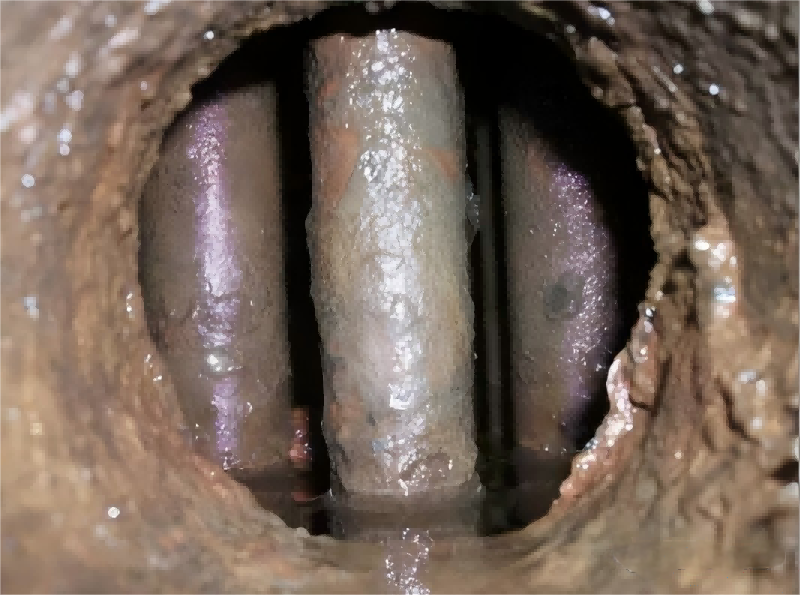Marketing Hotline:
(+86)0532-88988868
(+86)0532-88988868
Methods of controlling limescale
1. Ion exchange resin method
Let the water pass through the ion exchange resin to replace the calcium ions and magnesium ions from the water and combine them on the resin to achieve the purpose of removing calcium ions and magnesium ions from the water.
The cost of softening the make-up water by ion exchange method is high. Therefore, it is only occasionally used in circulating cooling water systems with a small amount of make-up water.
2. Lime softening method
Before the make-up water enters the circulating cooling water system, appropriate lime is added during pretreatment, so that the calcium bicarbonate in the water reacts with the lime in the clarifier in advance to form calcium carbonate precipitate precipitation, so as to remove calcium ions in the water.
This method is often used in circulating cooling water systems with low cost of adding lime, high calcium content of raw water and large water replenishment.
3. Add acid
Sulfuric acid is usually added, because the addition of hydrochloric acid will bring in chloride ions and increase the corrosiveness of water; The addition of nitric acid will bring in nitrate, which is conducive to the reproduction of nitrifying bacteria.
4. Pass CO2 gas
Carbon dioxide gas or flue gas is introduced into the water, disrupting the precipitation equilibrium and allowing it to proceed to the left, thus stabilizing the bicarbonate.
5. Add antiscalant
From the perspective of the crystallization process of calcium carbonate, if some agents can be added to destroy its crystal growth, the purpose of controlling the formation of scale can be achieved. At present, the various scale inhibitors used are polyphosphate, organic polyphosphonic acid, organophosphate, polyacrylate, etc.

Methods of controlling dirt
1. Reduce the turbidity of supplementary water
Natural water bodies are turbidity due to sediment, corrosive organisms, and various suspended solids and colloids. As a circulating water, the lower the turbidity, the better, indicating that the circulating water has less impurities, and when the inlet water quality of the circulating cooling water is not good, it must be pretreated. The concentration of suspended solids in circulating water treatment should not be greater than 20mg/L, and when the form of heat exchanger is plate type or fin tube type and spiral plate type, it should not be greater than 10mg/L.
2. Carry out good circulating cooling water quality treatment Circulating cooling water is mainly to prevent scale and corrosion. When the inlet water quality is not good, it will inevitably lead to the generation of scale and corrosion, and at the same time, there will be a large number of bacteria breeding, thus forming dirt, therefore, doing a good job in water quality treatment is a way to reduce the fouling of the system.
3. Add scale inhibitor and dispersant
In the antiscaling, antiseptic and sterilization and algae removal treatment, adding a certain amount of dispersant is also an effective way to control fouling. The dispersant can disperse the large mud mass into fine particles suspended in the water, which will not be deposited on the heat transfer surface with the flow of water, thereby reducing the impact of dirt on heat transfer, and at the same time, part of the suspended solids can also be discharged out of the circulating water system with the sewage discharge.
4. Increase the side filtration equipment
Even if the water quality treatment is very good, the turbidity of the influent water is well controlled, and the turbidity in the circulating water will still continue to rise, thus aggravating the formation of fouling. The reason why the turbidity of the circulating cooling water system will increase under the condition of stable operation is due to the fact that when the cooling water passes through the cooling tower and comes into contact with the air, the dust in the air will be carried into the water, resulting in the increase in turbidity. The addition of bypass filtration equipment can reduce the amount of dust entering the circulating water. As long as the side flow and the turbidity of the inlet and outlet bypass equipment are controlled, the turbidity of the system can be guaranteed to be maintained within the control index under long-term operation, so as to reduce the generation of fouling.


